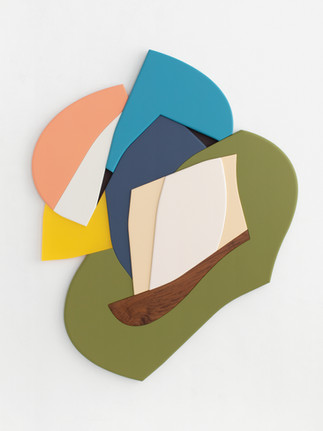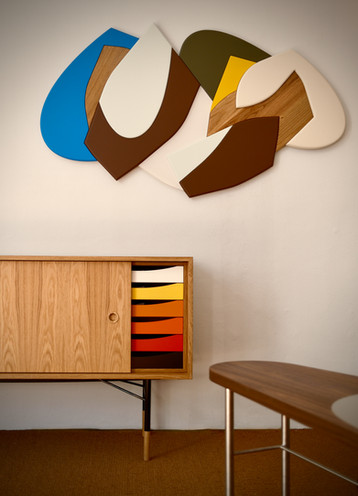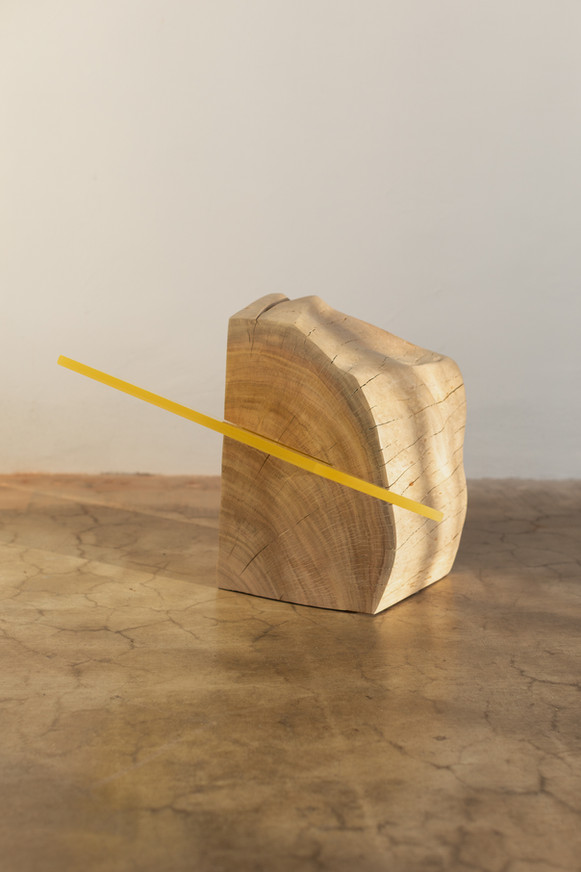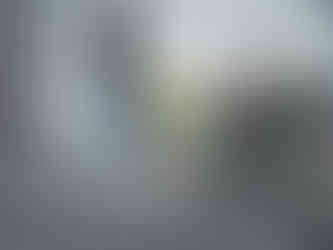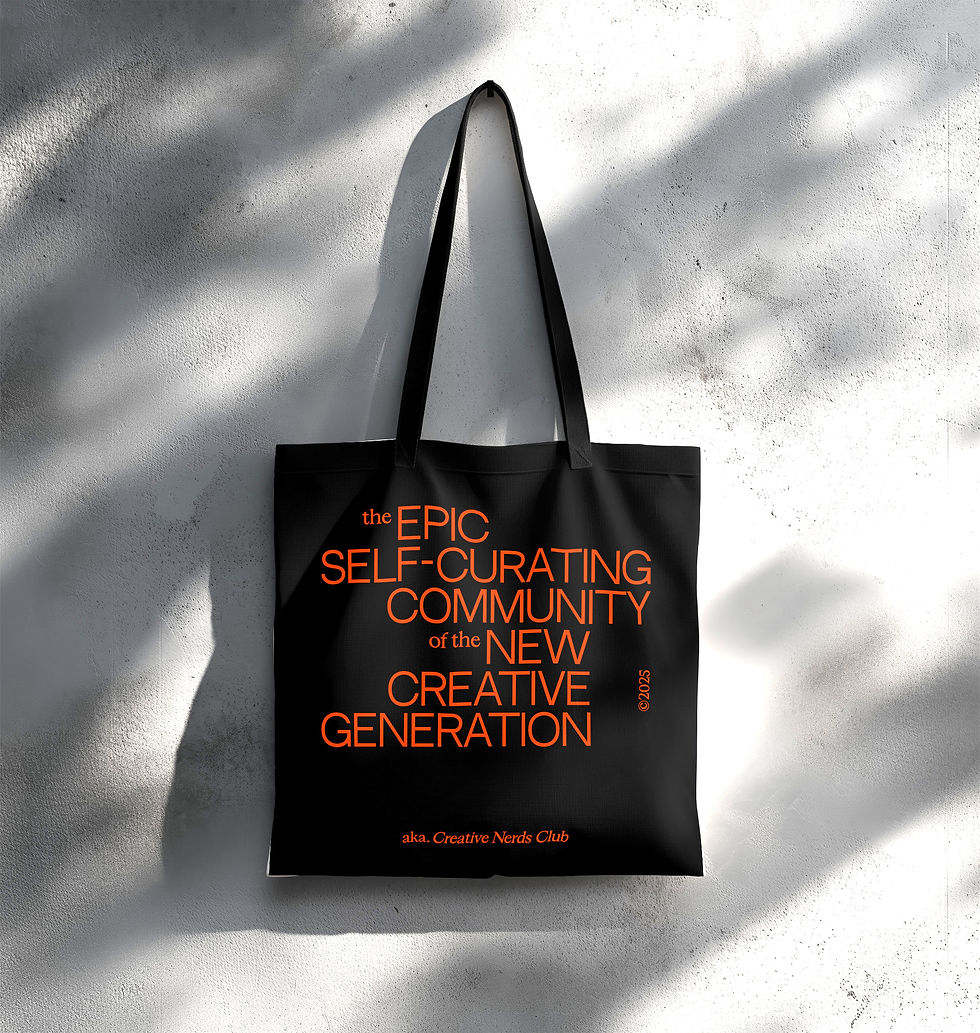Charlie Edmiston | Visual Artist
- Onur Çoban

- Sep 9
- 5 min read

© Charlie Edmiston
Charlie Edmiston is a Los Angeles-born visual artist whose practice is now based between LA and Amsterdam. His work explores the boundaries of form, color, and medium, reinterpreting the mid-century modernist legacy through contemporary production methods. While his pieces hang on the wall like paintings, their construction often evokes minimalist sculptures. Familiar geometries may initially appear as triangles or rectangles, but on closer inspection, lines curve, extra vertices emerge, and broken angles challenge conventional forms. Rather than full saturation, his preferred reddish or sky-like tones together evoke the vibrancy of Los Angeles, while individually creating a calm and elusive atmosphere.
We spoke with Edmiston about his artistic practice, his engagement with modernist aesthetics, the sense of freedom opened by ambiguous forms, and his plans for the future.
Interview: Onur Çoban
Who is Charlie Edmiston? Could you briefly introduce yourself?
I’m a visual artist born and raised in Los Angeles and currently based between LA and Amsterdam. I grew up in a creative family that always embraced the arts, which I’m very grateful for. My grandmother was a cartoonist, my father was a calligrapher, and his father was an industrial designer. I think those early influences shaped how I approach form and visual communication. I studied painting and also spent many years working in graphic design, and both continue to inform my practice. My work often moves between painting, sculpture, and design.
© Charlie Edmiston
How would you describe your artistic practice?
Since art school in the mid-2000s, my practice has been focused on the vast world of shape and color and how they’re experienced throughout physical and digital space. I’m interested in how the format can completely change how a work is understood and valued, and in the wide spectrum of feelings the same color creates in different people.
My relationship to color is pretty strange. It’s an essential part of my work, but I’m colorblind. Instead of traditional theory I’ve always had to rely on contrast and intuition. That’s what led me to making my early abstract paintings, which still guides how I approach new work.
“Recently I’ve been paying more attention to architecture and furniture design. I think of my practice as a constant process of discovery and experimentation. The work I make now should look different in ten years, just as it looks different from what I was producing a decade ago.”

© Charlie Edmiston
Your works often have a minimal yet powerful presence. What marks the starting point of your creative process? What usually sparks the first idea?
It changes all the time. Often the process begins with understanding where the work will live. The cohesion between the artwork and its surrounding environment to me is such an important part of the experience. Sometimes I’ll develop ideas based on unique characteristics within a gallery I’m working with or a structure I’m supposed to paint. Other times the concept comes out of nowhere. My inspiration folder on my laptop is filled with the craziest things, but somewhere in there lies the spark.
What does ambiguity mean to you? Does choosing not to clearly define colors or forms create a sense of freedom in your work?
Well, now that we know I’m colorblind, that probably explains a lot! There has always been something intriguing to me about shapes and colors that are just slightly off. Instead of a symmetrical square, one that is tilted with a broken angle is more interesting to me. An uncommon off-blue feels better to me than your standard cobalt. I remember early on in my journey into abstraction, I asked a friend who was building my panels at the time if he was capable of making a skewed diamond shape. This was quite different from the squares and rectangles I was used to. It was the first time the shape of the canvas itself was part of the piece, rather than just a means to display the picture. Once I understood the work was no longer confined, not only did I feel an immense sense of freedom, but I also knew it was just the beginning. I like the idea of owning certain irregular forms. They’re not clearly defined, yet they’re a reflection of me.
© Charlie Edmiston
Your work often references mid-century modernism. As you bring that visual language into the present, what do you choose to preserve, and what do you transform?
That golden era of design seems to have just gotten it right. The hardwoods used in a lot of the furniture back then are referenced in my work today. It’s a fine line trying to maintain the spirit of timeless design while constantly getting pulled into the future. Today’s technology allows me to produce work with incredible speed and precision, and it’s only getting easier. But a machine-milled chair can’t replace the soul of one made by hand, which these days is something that must be preserved. In essence, I hold onto the material purity and craftsmanship, while the process and concept of the work continue to transform.
Looking back, which project has excited you the most in terms of both the design process and the final outcome?
In 2023 I had a show with PERG Gallery in Germany that I often look back on. It wasn’t the largest show I’ve produced or necessarily the most “successful,” but there were experimental ideas and materials that still resonate with me. The gallery itself was beautiful and unique, with a sleek, polished room in the front that led into a raw, concrete, industrial back room. That physical and visual blend of textures allowed my curiosity to run wild and explore new concepts. The artwork mirrored the contrast of the space, pairing rough concrete with smooth shapes side by side. I also collaborated with a local designer to produce a sculptural and functional bench, which was a nice addition. The combination of the gallery space, the team that helped put the show together, and the way the work was developed felt very special.
Lost and Found, PERG Gallery, 2023, Photography © Chiara Bellamoli
What are some of the sources of inspiration behind your work? Are there any artists or creators—within or beyond your field—that you follow with curiosity?
I’ve gone to several design fairs over the last few years that honestly inspire me a lot more than a typical art fair. There are so many independent furniture makers and designers that are
pushing the boundaries, which has been very motivating. I feel like the material choice and form have a big impact on what currently excites me.
I’m also still deeply fascinated with mid-century abstract painters and sculptors from around the world, but more specifically New York and California. The work of Ellsworth Kelly remains some of my favorite and most influential, along with a much lesser-known artist named Tony DeLap. More recently I’ve become a big fan of Ted Stamm, who was working in New York in the 70s and 80s. Unfortunately, I’d say 99% of the artists I most admire are no longer alive. Although I did see a show earlier this year with brand-new paintings from Robert Mangold at age 87, which is definitely life goals.
Are you excited about the future? What’s on the horizon for you?
I have my first solo exhibition in Asia opening this November in Seoul, which I’m pretty excited about and has been keeping me extra busy. I’ll be showing a few new ideas I’ve been working on in the studio, some a bit more conceptual than usual. Aside from that, I have a collaborative project in the works with designer and “colourist” Teklan from Sweden. She uses color in such an incredible way, and I thought it would be a fun experiment to develop a series of paintings and have her select the entire palette. The project will debut later this year.










